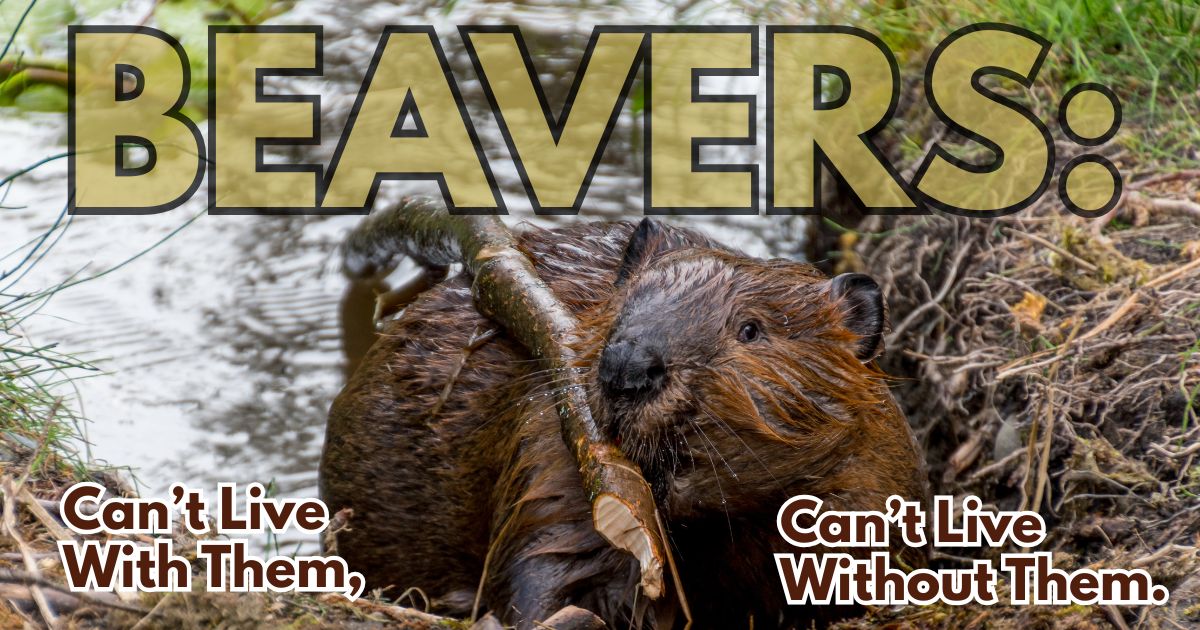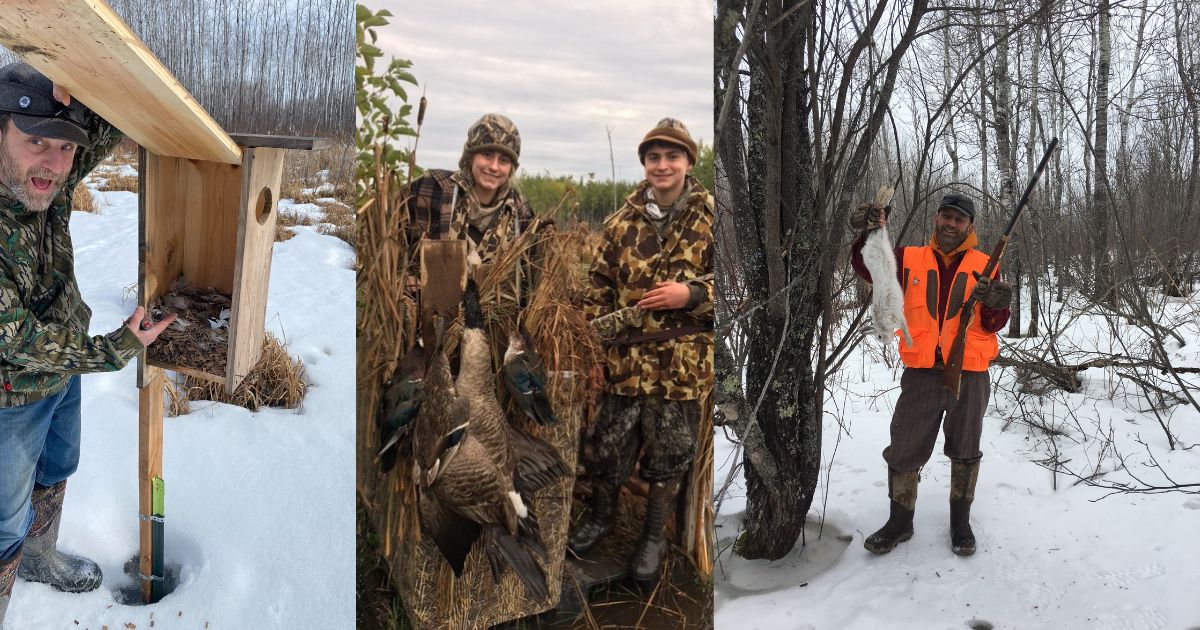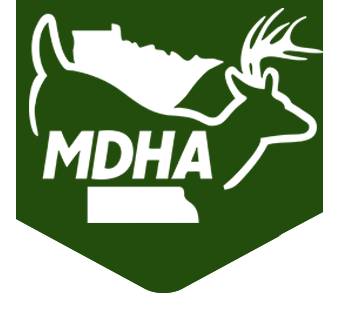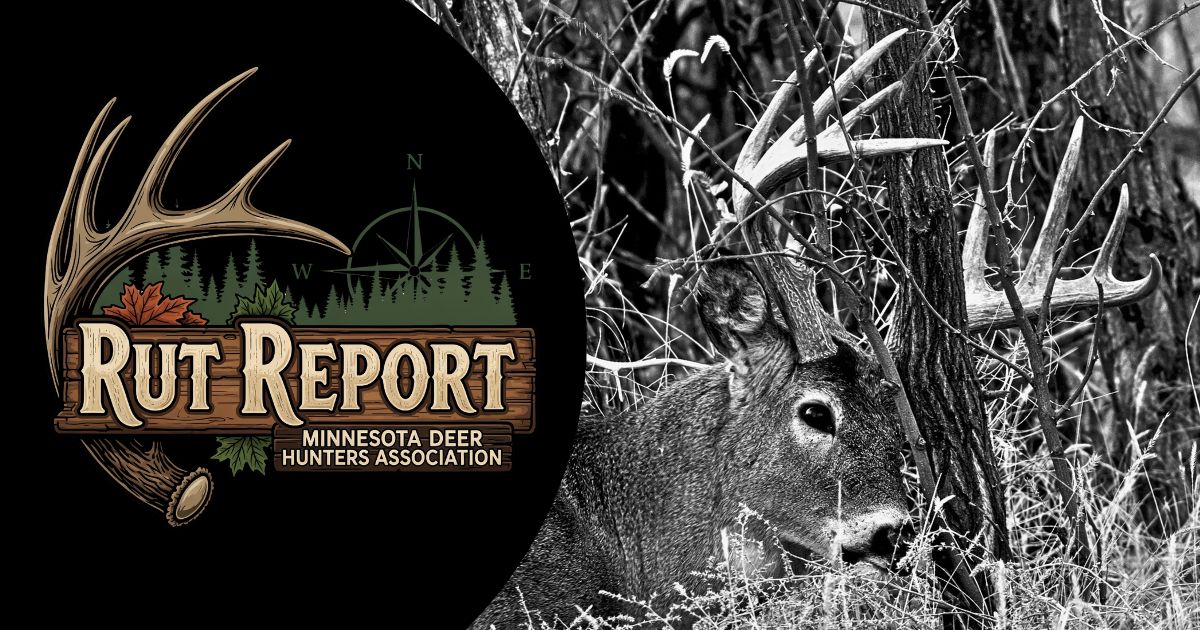
- Joe Cannella
- From Whitetales
- Hits: 2632
Beavers: Can’t Live with Them, Can’t Live without Them?
- Joe Cannella
- From Whitetales
- Hits: 2632
Beavers can be a royal pain. They flood roads and trails impacting access to your hunting lands. They can also destroy valuable timber and if you own the timber and were counting on a pay out, it really bites.
With fur prices in the dumpster there is no shortage of beaver in Minnesota. The handful of diehard trappers just cannot put a dent in the beaver population. So, sometimes as landowners you need to take care of the problem beavers yourself. To me it is disappointing when any natural resource is wasted, in this case beautiful renewable fur. Hey, you got to do, what you got to do. KABOOM! is becoming a frequent summer sound in beaver country as dams are dealt with by both landowners and agency professionals.

That is the bad about beavers, but truth be known, the beaver pond on my property is our family’s favorite spot. Now I cannot tolerate any further expansion or new ponds being formed by the industrial rodents. We stay diligent in looking out and resisting any new expansions of their empire. But, the 20 acres we relinquished to them is now a hot spot for all sorts of fun.
Starting with deer, since we are all deer nuts, the beavers create a ton of browse every year by dropping trees that hang up out of their reach, but are perfect for wintering deer food, especially since this cutting occurs toward the end of summer, holding the fresh buds into the winter.
A significant portion of the best bedding areas are near the beaver pond due to the horizontal cover the beaver creates, again from hung-up aspen. Humans didn’t invent the habitat hinge-cutting trend very popular today, beavers did. Sure, it is no fun to walk through, but that is what makes it great for deer. When cut, the aspen roots send up thousands of suckering saplings, again more browse. The increased sunlight hitting the ground promotes dogwoods, hazelnut, willow and soft mast trees, more great deer food.
As far as hunting goes, the pond shorelines are travel destinations for both food, bedding, cover and obviously water. Stands placed intercepting deer in this area can be high percentage areas. My favorite added benefit is the view and entertainment value of a beaver pond. There always seems to be some critters to observe while nestled in my stand near the pond.
But wait, there is more! We maintain a bear bait station on the west side of the pond. With prevailing winds out of the west/northwest most of the bear season, our scent blows over the pond while on stand. Any bear guide will tell you a good water source nearby increases bear usage at your bait station. Bears need to drink, of course, but staying cool is an additional attraction. That increased sunlight along the shorelines of a beaver pond creates bear food, too. Choke cherries, dogwood berries, high bush cranberry and hazelnuts are all top natural food choices common around beaver ponds. And again, you can’t beat the view. Even though sitting on a bear stand can be a tedious task, when you are audience to a live version of the Discovery Channel time goes by pleasantly. Watching the waterfowl swim around and fly in and out brings me to my next love of the pond.

Our pond provides us with several waterfowl hunts per season. Being a small pond, sometimes the ice comes too soon and the season is cut short, but we usually get a few hunts in every year. Our bag consists of gorgeous woodies, meaty mallards, and a few bonus honkers. A small pond also makes a great place to train new pups.
We assist our local waterfowl through placing both duck houses and nesting platforms. This, too, has become an annual family event, managing the nesting structures each spring and discovering the successful hatches of both ducks as well as other birds taking advantage of our artificial structures. We built the structures, but I still give the credit to beavers just doing what beavers do. I would not have a pond without them nor would the ducks.
I am still not done, grouse and woodcock also are attracted to the pond’s surrounding woods for basically the same reasons as deer and bear. Cover and food choices are found in abundance along the pond perimeter. While duck hunting, we see migrating woodcock flying over the pond during the twilight silhouetted against the morning sky. They land along the shore searching for worms. Well noted, we return after the morning duck hunt to bag some timberdoodles.
All that freshly downed aspen also provides winter food for snowshoe hares. Aspen bark for snowshoe hares basically is life during the long winter. With a .22 or better yet a .32 muzzleloader in hand makes for a great winter trek during the cold months and yet another way to expand our time at our camp. Hare hunting is fun and great exercise. And don’t worry, you never get cold stomping through deep northern Minnesota snow pack, even in the heart of winter.
Finally, it is common for me in particular, to spend a few evenings in the late summer sitting in the duck blind with my skeeter fighting Thermacell cranking. I just relax, soaking up the summer evening sounds and sights of the abundant wildlife frequenting the pond. I have seen otters, mink, muskrats, swans, and abundant songbirds. Of course, the star of the show, the beavers, are themselves a pleasure to watch.
I admire their work ethic, many hours of their day are spent cutting tree tops for food to be cached in large piles, they stick the branches into the pond for access later when they are held captive under the ice. Imagine this rodent logging trees with its teeth, then dragging the wood through the woods to canals they have dug. It is hard enough bucking trees for firewood with a chainsaw. You have to give them some serious respect. This little rodent has the skills and determination to manipulate the landscape, which starts with finding and damming a small water flow to create a pond to suit its own needs. Like humans, sometimes what we do to benefit us, helps other species. That is pretty cool.

So yeah, beavers can be a pain, but you have to admit, they make some dang good habitat. So, if you have the room to allow it to happen on your land or have access on some public land to beaver ponds, take advantage of the creations made by this hard-working rodent logger, a true woodland steward.
But hey, if things get out of control and you got to do, what you got to do, don’t sweat it. I don’t think beavers are going away anytime soon.






